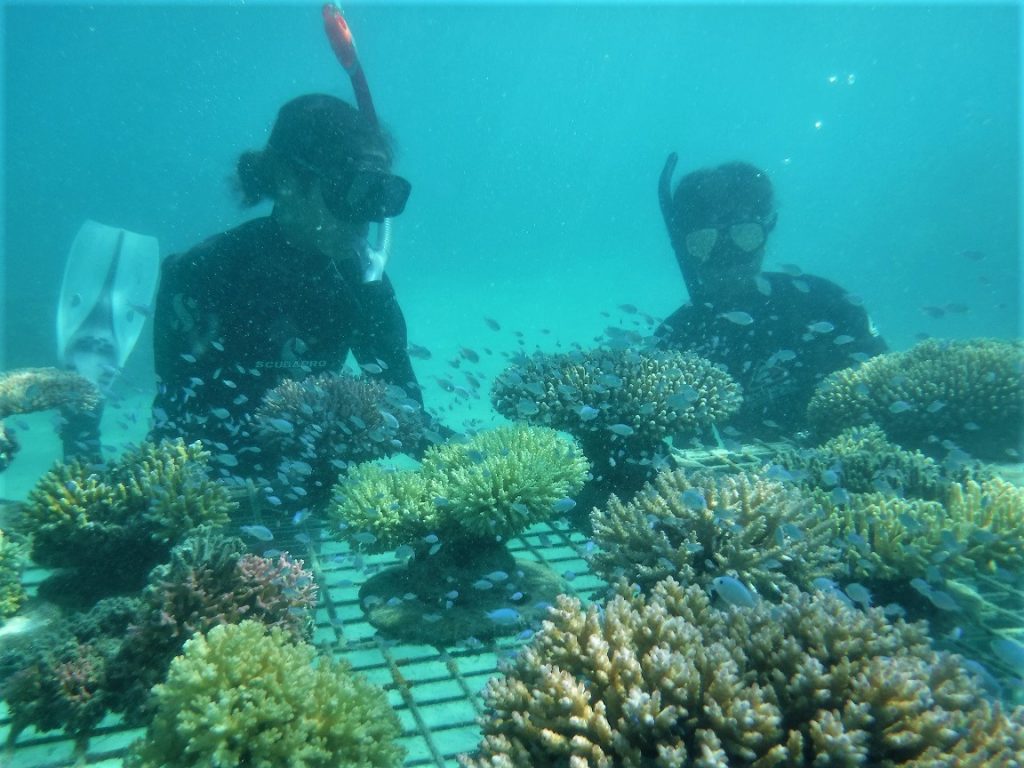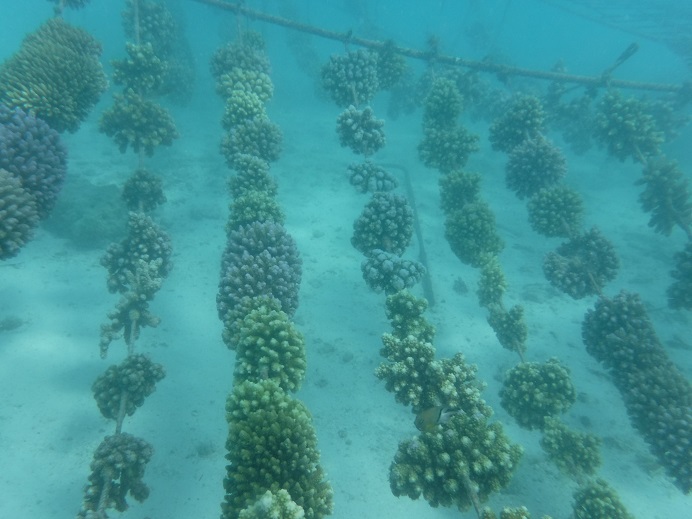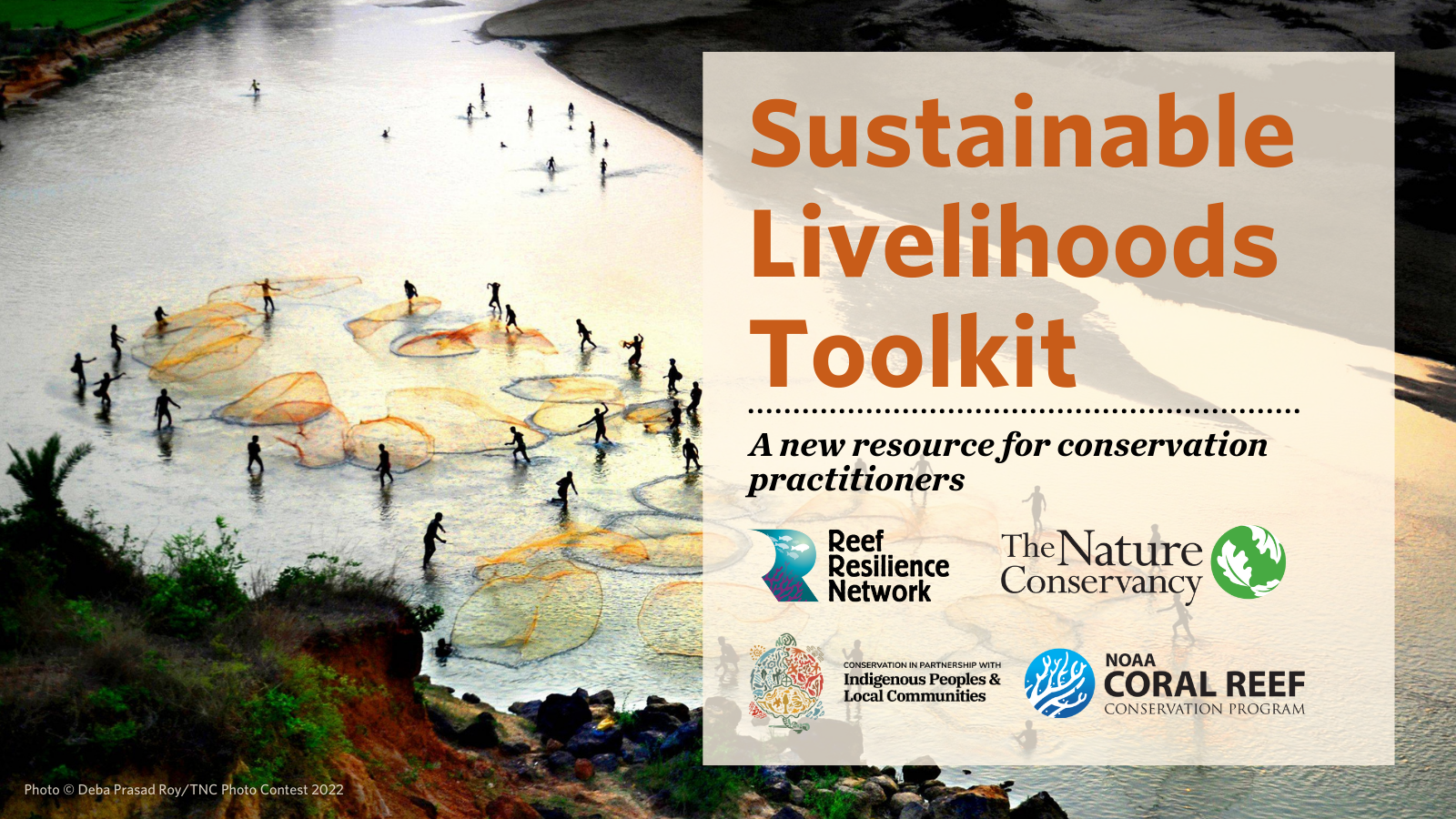Coral Restoration for Climate Change Adaptation in the South Pacific
Location
Fiji, Kiribati, Tuvalu, Samoa, Vanuatu, and French Polynesia
The challenge
Climate change is increasingly becoming the major stressor on coral reefs of the South Pacific region, replacing overfishing, water quality issues, and physical destruction of reefs as the major cause of reef decline on many reefs. Warming oceans is resulting in mass coral bleaching and coral death, which threatens to undermine much of the progress made in coral reef conservation over the past decades. Well managed, and even pristine coral reefs have proven no more resilient than overfished and degraded reefs in the face of mass bleaching. Strategies to increase bleaching resistance and post-bleaching recovery are needed in order to address climate change as the greatest emerging challenge. For the South Pacific, where funding for coral reef restoration has been very difficult, these strategies need to be mainstreamed into the tourism industry and community-based efforts.
Actions taken
Coral-focused climate change adaptation measures have for the most part been nested within existing coral reef management strategies and MPAs, through capacity building and the establishment of coral nurseries and restoration sites composed of bleaching resistant corals. Unbleached corals are sampled during mass-bleaching events and from populations proven resistant to bleaching within natural hot pockets in the wider reef system – shallow closed lagoons and reef flat tide pools. Special emphasis is placed on sampling Acropora species, which have proven particularly vulnerable to bleaching and to post-bleaching mortality, and which we have found to become rare or locally extinct on reefs severely impacted by bleaching. It is often a race against time, as our sites have clearly shown that predation can kill most of what survives mass bleaching within only months. Fragments are taken from these bleaching resistant corals and established within gene bank nurseries located in less stressful/cooler water conditions secure from predators. The second phase of the work involves trimming fragments from colonies grown in the nurseries, for outplanting into restoration patches located on degraded reefs within established no-take reserves where other stressors are minimized.
How successful has it been?
We have established a restoration strategy that builds bleaching resistance on coral reefs in seven South Pacific island nations, helping coral reefs adapt to increasing water temperatures. We have taught the strategy to a sizable group of trainees in the region. National and local partnerships have been established, and the restoration work has been linked to ongoing coral conservation work. Twenty-two gene bank coral nurseries have thus far been established: Fiji, Kiribati, Tuvalu, Samoa, Vanuatu, and French Polynesia, each with dozens of species and multiple coral genotypes of each species.

Gene bank nursery with mother corals, and coral gardeners, and the fish which help keep the corals healthy. Mamanuca Islands, Fiji. Photo © Austin Bowden-Kerby
In Fiji, our major resort partnership site is located at Plantation Island Resort in the Mamanuca Islands. The resort has sponsored the training of 15 Fijians as professional coral gardeners to serve in the tourism industry. The resort hired two of the coral gardeners as full-time staff in 2018, to maintain and advance the coral restoration work. Three highly successful international restoration workshops were carried out at the resort in 2019-20, training 75 people from thirteen nations. A foundation has also been laid with the Indigenous community and other resorts for establishment of a permanent marine park in the wider area. With the COVID-19 crisis, the resort is closed and all training is cancelled, however the resort continues to employ the two coral gardeners, and to provide boats and accommodation for Corals for Conservation (C4C) in order to maintain and advance the coral restoration and bleaching resistance work.
In Kiribati, where mass coral bleaching in 2015-16 lasted for 14 months, and where bleaching temperatures have continued for 30 months out of the past 60 months, very few corals have survived, and many species have become locally extinct. At our Kiritimati (Christmas Atoll) site, virtually all branching corals were killed in the mass bleaching, however we have been able to locate and to propagate a few “super coral” survivors, with more than one genotype of at least seven Acropora species and two Pocillopora species collected and propagated within our field nursery. Two outplanting sites have thus far been established for two of the Acropora species and for one of the Pocillopora species.
The COVID-19 crisis has prevented international travel and follow up, limiting C4C’s work to the Fiji sites for now. Local partners are continuing with site maintenance, although reporting is erratic.

Kiribati’s super corals on ropes in a nursery. Photo © Austin Bowden-Kerby
Lessons learned and recommendations
- Post bleaching predation and subsequent mortality of the few survivors of mass bleaching can be an important factor preventing coral reefs from adapting to increasing temperatures over time.
- The collection of corals from heat stressed hot pockets can be time-sensitive, as thermal stress is increasing year by year, and some hot pockets formerly filled with resistant corals have already over-reached the maximum temperature for any corals to survive. The most bleaching-tolerant populations had already died out on Kiritimati Atoll by the time the work began in 2016. On Funafuti Atoll, Tuvalu, >90% of the corals of the shallow southern lagoon were dead and standing, apparently dying in mass bleaching before the work began in 2018. Where possible, remaining hot pocket corals should be sampled and established within gene bank nurseries located in cooler waters.
- It is impossible to replant entire coral reefs, however it may be possible to jump-start natural recovery processes, and to spread bleaching resistance among coral populations. We have seen strong larval recruitment around our nurseries, with nurseries apparently becoming a strong settlement signal for incoming larvae. Reefs without corals may have delayed recovery via recruitment due to a lack of settlement cues, therefore scaling up does not require that corals be replanted to entire reef systems, rather dense patches of corals widely spaced might serve to reboot natural processes of coral recruitment, as long as a source of larvae exists up-current. There is also hope that widely spaced outplanting might reap a much bigger result, as coral larvae settle in ‘naked’ – without symbiotic algae, and acquire their algae from what leaks out of nearby corals – so patches of bleaching resistant corals might spread their resistant algae to newly settled corals. Lastly, if the outplanted patches are composed of multiple genotypes of each coral species, sexual reproduction will be re-established among populations of rare and resistant corals, and so a third source of natural recovery and resistance is secured.
- The tourism sector and communities can become major resources for action and progress, but training and long-term guidance is required for effectiveness. Coral Gardener as a profession is operational, and the diverse methods employed do not rely on SCUBA and are thus less expensive and more accessible.

First international coral gardening workshop for the tourism industry at Plantation Island Resort, Mamanuca Islands Fiji, in February 2019. Photo © Austin Bowden-Kerby
Funding summary
Funding has mostly been crowd sourced through Global Giving, with Fiji site expenses supported by Plantation Island Resort, sites in Kiribati and Tuvalu were also supported by the Conservation Food and Health Foundation, Southern Cross Cable, Line Islands Fisheries (Kiribati), and the Ministry of Environment (Tuvalu). Other support was UNFAO (Samoa), Island Reach (Vanuatu), and the World Surf League (Mo’orea).
Lead organization
Partners
Plantation Island Resort, Malolo Community, Naidiri Community, Line Islands Fisheries, Tuvalu Ridge to Reef Programme, Samoa Fisheries, FAO South Pacific, Coral Gardeners Moorea, World Surf League
This case study was developed in collaboration with the United Nations Environment Programme (UNEP) and the International Coral Reef Initiative (ICRI) as part of the report Coral Reef Restoration as a Strategy to Improve Ecosystem Services: A Guide to Coral Restoration Methods.


